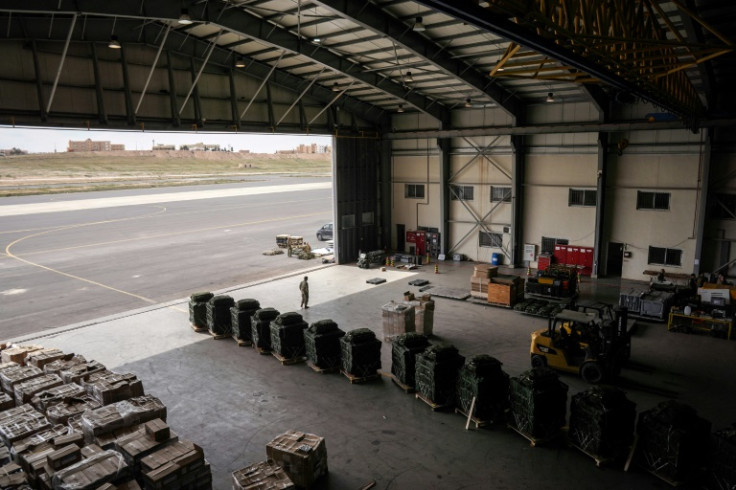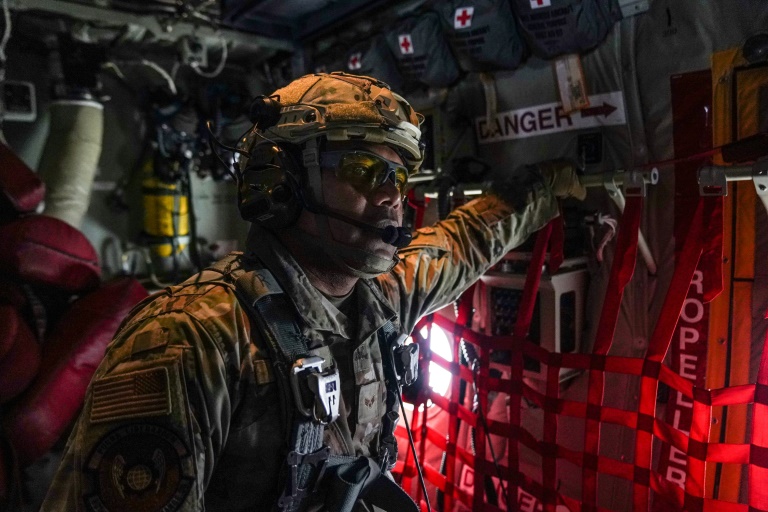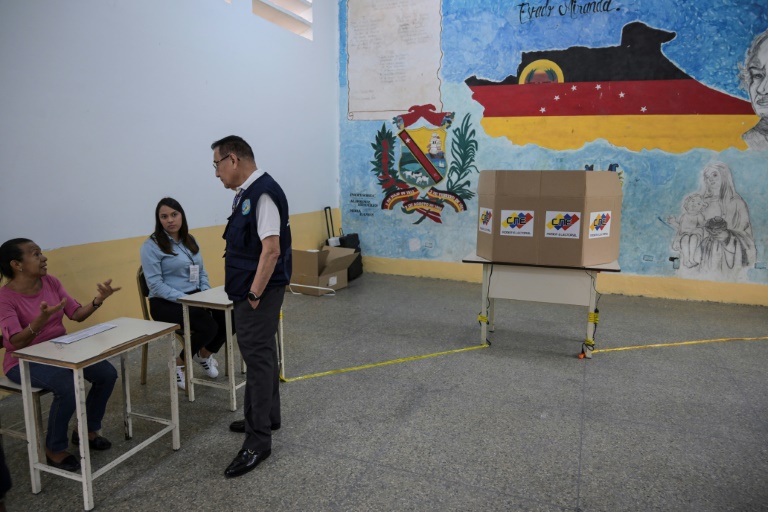From the hatch of a US aircraft, the destruction wrought by months of war on the Gaza Strip stretched out below in grey piles of debris along the turquoise waters of the Mediterranean.
The transport plane rumbled above the besieged territory, as airmen from the 26th Expeditionary Rescue Squadron readied pallets of desperately needed food aid destined for Palestinians in northern Gaza.
But the three tonnes of humanitarian assistance provided by Jordan is just a “drop in the bucket” of what is needed, said co-pilot Lieutenant Colonel Jeremy Anderson.
“There are so many people that need aid out there,” he said, during the 10th US aid drop over the territory.
Gazans are experiencing dire shortages of food and other basic necessities more than five months into Israel’s war on Hamas, with the United Nations warning of looming famine as aid trickles in.
The Hamas-run territory’s health ministry has in recent weeks recorded at least 27 deaths from malnutrition and dehydration, most of them children — figures expected to rise.
With only a small fraction of the basic supplies needed to sustain Gaza’s 2.4 million people coming in by land, foreign governments have turned to airdrops and a new maritime corridor from Cyprus.
As the propellor-driven aircraft settled into its path above the coast, 15 pallets rolled out an open door at the rear, towards the wasteland of destroyed homes and lives stretching out below.
White parachutes shot out to gently lower the cargo of cardboard boxes filled with basic foodstuffs like rice, flour and pasta.
Across northern Gaza, once-towering residential buildings were either toppled or pancaked into themselves.
In one flattened area visible from the sky, an enormous Star of David was etched into the sand.
The relentless Israeli bombardment has raged since Hamas launched an unprecedented cross-border attack on October 7 that resulted in about 1,160 deaths, most of them civilians, according to an AFP tally based on official Israeli figures.
Hamas also seized about 250 hostages, around 130 of whom Israel believes are still held in Gaza, including 32 presumed dead.
Israel’s retaliatory campaign in Hamas-controlled Gaza has killed 31,341 people, mostly women and children, according to the territory’s health ministry.
Daily aid airdrops by multiple countries have been taking place this month, but they are “no alternative” to land deliveries, 25 organisations including Amnesty International and Oxfam said in a statement.
European Union foreign affairs chief Josep Borrell said this week that “starvation is being used as a war arm” in Gaza, calling the humanitarian crisis “man-made”.
Despite airdrops being far from sufficient to address the scale of the humanitarian disaster, the international community is doing what it can, said the US serviceman.
“Anything outside of air dropping is out of our control, so we’ll manage the things that are within our control,” said Anderson.
The dire shortages have left starving Palestinians scrambling for scraps of aid, sometimes at a deadly cost.
A medic in Gaza said last week that an aid drop killed five people and wounded 10.
US Central Command subsequently said it was aware of the reports, but stressed that “this was not the result of US airdrops”.
Anderson said the US Air Force was taking steps to mitigate the risk by lightening loads and dropping shipments near the water.
“If a chute doesn’t open, it’s going to go in the water and nobody is going to get hurt.”
AFP

AFP







